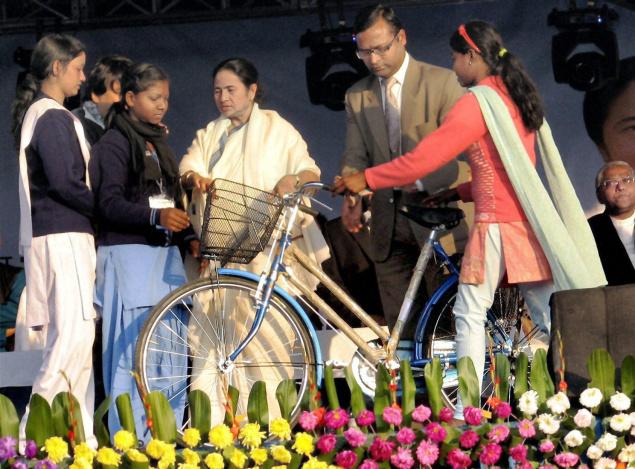January 10, 2014
WB CM`s brainchild Kanyashree scheme becomes a huge success

The State Government has received a whopping six lakh applications from girl students for scholarship and grant under the Kanyashree scheme launched in October, 2013. Out of these, 50,244 applications seeking scholarships and 2,705 applications seeking the one-time grant have already been approved.
This unique project was taken up to prevent child marriages.
While a number of factors contribute towards girls dropping out of school, human rights research shows that the greatest obstacles to girls` education are child marriage, pregnancy and domestic chores, and ensuring that girls stay in school is one of most effective protective measures against child marriage. In the above context, the Government of West Bengal, following the vision of the Chief Minister Ms. Mamata Banerjee, decided on creating an enabling environment for elevating the education, health and nutrition status of women and children through Kanyashree scheme.
The scheme aims at improving the status and well being of girl child by:
- Discouraging early marriage of girls to ensure compliance with the legal provisions pertaining to the minimum age at marriage.
- Incentivize through scholarships, the continuation of education of the girl child in Secondary and Higher Secondary classes and those undergoing vocational training or sports training.
- Improving IMR and MMR by delaying the age of marriage and consequently increasing the median age of first birth
- Reducing the incidence of drop outs, especially amongst girls from poor families.
- Eradicating undernutrition and mal-nutrition of girl child.
- Preventing trafficking and exploitation of the girl child.
Socio-economic revolution through legislation
West Bengal has an adolescent (10-19 years) population of 1.73 crores, out of which 48.11% are girls. The age group 10-14 years forms 9.3% of the total population while 15-19 forms 9.7% of the total population. WHO has identified this age group as the period of preparation for adulthood during which several key developmental experiences occur like acquiring social and economic independence, development of identity, the acquisition of skills needed to carry out adult relationships and roles and the capacity for abstract reasoning. While adolescence is a time of tremendous growth and potential, it is also a time of considerable risk during which social contexts exert powerful influences.
Child marriage is one such social concern and a violation of children`s rights. According to DLHS – 3 (2007-08), West Bengal shows the fifth highest prevalence of child marriage amongst all the states with 54.7% currently married women (age 20-24) being married before 18. The incidence is even higher in rural areas (57.9%). Every second girl in the high prevalence child marriage districts of West Bengal – Murshidabad (61.04%), Birbhum (58.03%), Malda (56.07%) and Purulia (54.03%) – were married off before they reach 18, the legal age for girls to get wedded.
Under the Kanyashree scheme, unmarried girls between 13-18 years and studying in VIII -XII standards in an institute affiliated to the state government are eligible for a scholarship of Rs 500 per annum. This apart, there is a provision for one-time grant of Rs 25,000 for unmarried girls between 18 and 19 years pursuing higher education or a vocational or sports course in a state-government affiliated institute.
